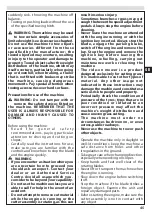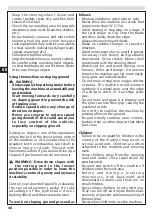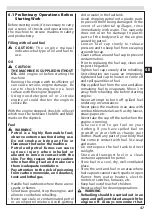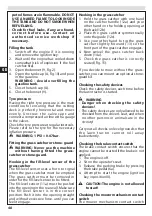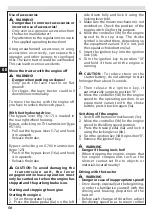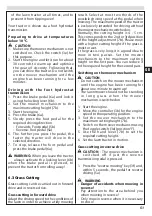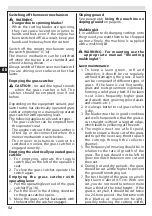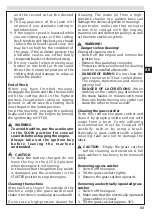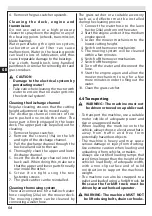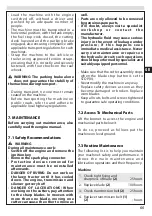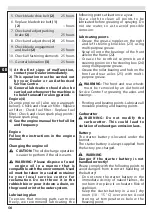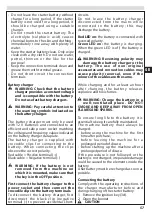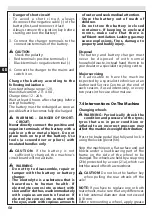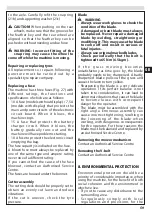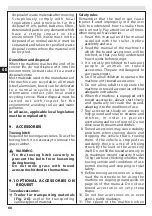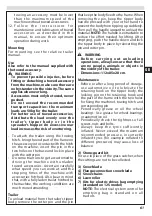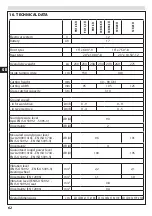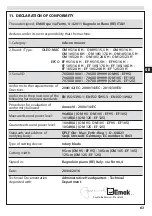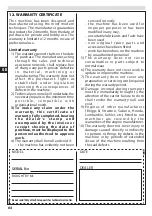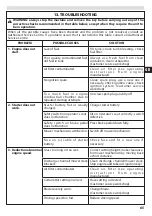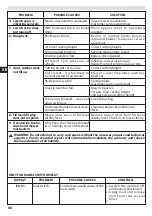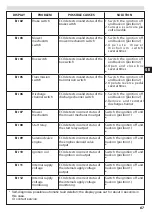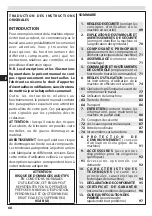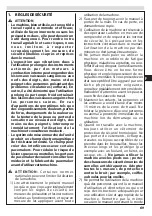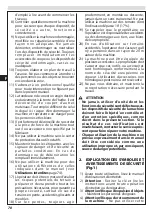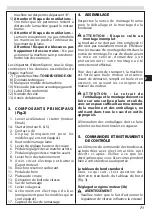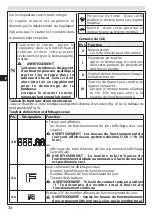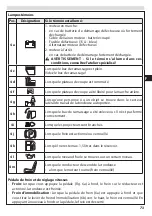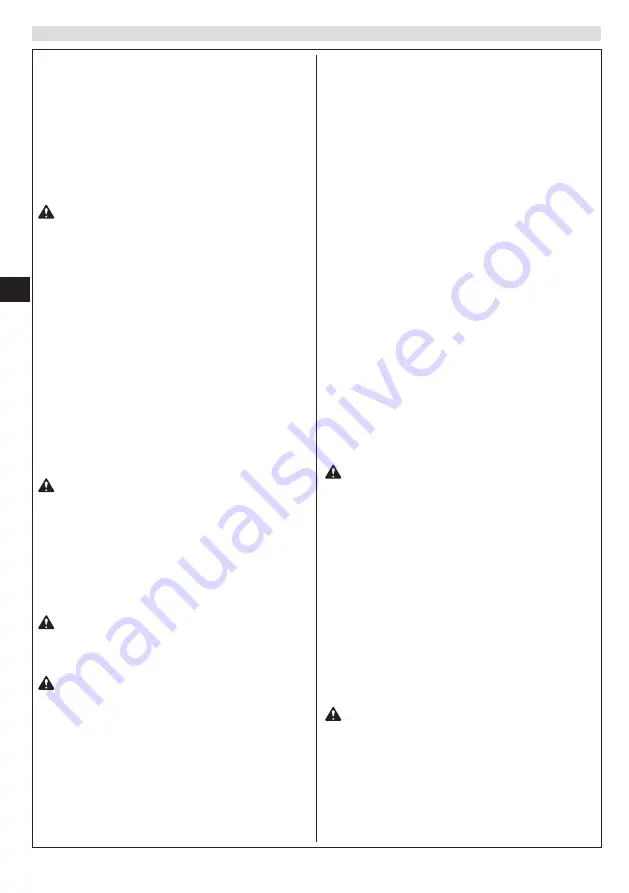
58
GB
- Danger of short circuit!
- To a vo i d a s h o r t c i rc u i t , a l w a y s
disconnect the negative cable (-) of the
battery first, and reconnect it last!
- Always remove the ignition key before
starting work on the battery!
3. Connect the charger terminals to the
connection terminals of the battery.
CAUTION
Check the polarity:
• Red terminal = positive terminal (+)
• Black terminal = negative terminal (-)
4. Connect the charger to the mains and
switch it on.
Charge the battery according to the
following indications:
Constant voltage range: 12 V,
Max initial current: 2.0 - 4.0 A,
Charge time: 12 - 24 h.
Wait at least 4 hours after charging before
using the battery.
The battery must be recharged as soon as
possible after it becomes fully discharged.
WARNING – DANGER OF SHORT-
CIRCUIT:
Never directly connect the positive and
negative terminals of the battery with a
cable or other metal object. Do not
place tools on top of the battery. Use
tools (a screwdriver or pliers) with
insulated handles only.
C AU T I O N : I f t h e b a t t e r y i s n o t
sufficiently charged, the machine’s
circuit board will not activate.
WARNING
- Do not try to disassemble, repair or
tamper with the battery or battery
charger.
- The electrolyte is a substance that is
h a z a r d o u s t o h u m a n h e a l t h . I f
electrolyte comes into contact with
skin and/or clothes, wash immediately
with copious amounts of water. If
electrolyte comes into contact with
the eyes, wash with copious amounts
of water and seek medical attention.
- Store the battery out of reach of
children.
- Do not store the battery in closed
containers. If keeping in enclosed
ro o m s, m a ke s u re t h at t h e re i s
sufficient ventilation. Leaking gas may
cause explosions, fires, damage to
property and bodily injury.
Disposal
The battery and battery charger must
n e ve r b e d i s p o s e d o f w i t h n o r m a l
household waste, instead hand them in to
your dealer or a specialist recycling centre.
Major servicing
I t is advisable to have the machine
inspected by a specialist technician at an
Authorised Service Centre at the end of
each season, if used intensively, or every
two years in the case of normal use.
7.4 Interventions On The Machine
Changing wheels
WARNING: Periodically check the
condition and pressure of the tyres;
tyres that are in poor condition or
inflated to an incorrect pressure may
affect the machine’s weight distribution.
Press the brake pedal (6a) fully and lock it
using the locking lever (6b).
Stop the machine on a flat surface and put
blocks under a load-bearing part of the
frame on the side of the wheel to be
changed. The wheels are held by a snap ring
(21b) protected by a cover (21a), which can
both be eased off with a screwdriver.
CAUTION! Do not lose the feather key
when pulling the rear wheels off the
axle!
NOTE: If you have to replace one or both
rear wheels, make sure that any differences
in their external diameter does not exceed
8-10 mm.
Before remounting a wheel, apply grease


